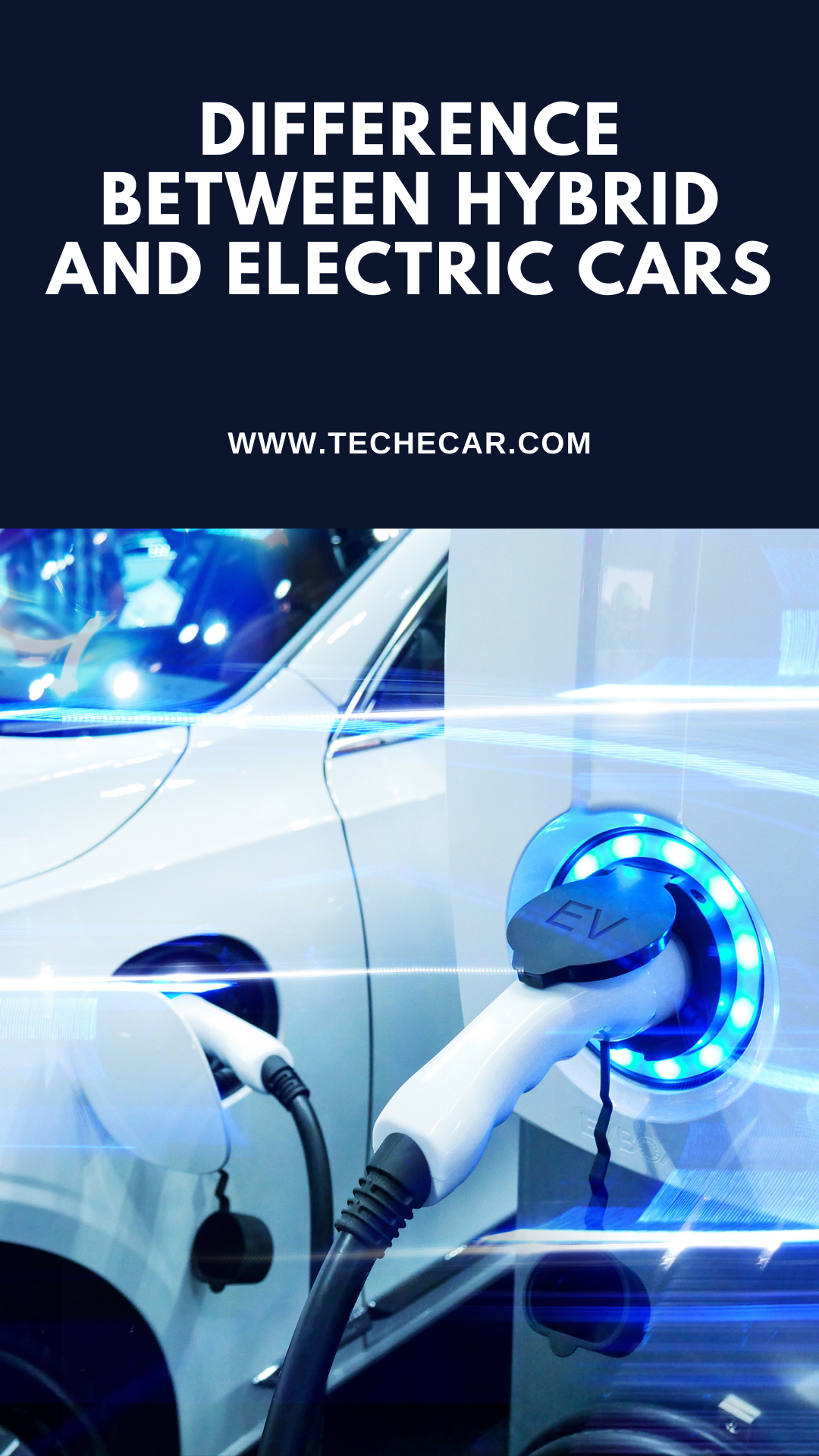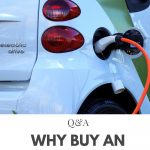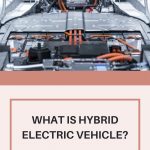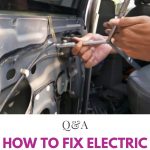Difference Between Hybrid And Electric Cars
Topic: Difference Between Hybrid And Electric Cars


Difference Between Hybrid And Electric Cars
Various electric and hybrid vehicle models are frequently discussed. However, they are not the same. The primary distinction between an electric automobile and a hybrid car is that the former relies solely on electrical energy stored in a battery. In contrast, the latter utilizes both electrical energy and conventional petrol.
Exactly what is a hybrid-electric vehicle?
An internal combustion engine is used in conjunction with one or more electric motors, drawing power from batteries to power the hybrid electric vehicle. A mild hybrid—also known as micro hybrids—can reduce fuel consumption when the vehicle is stopped at traffic signals or in stop-and-go traffic with a battery and electric motor.
Definition: What is an e-car?
Instead of gasoline, electric vehicles use electricity as their power source (EVs). As a result, they don’t pollute the environment or generate greenhouse gases, and they’re also quieter and smoother than traditional automobiles.
It is common for electric cars to have batteries that must be recharged from an external source of electricity.
In addition to being quieter and emitting no exhaust emissions, electric vehicles are also more environmentally friendly. Interestingly, some countries have passed legislation to phase out the sale of fossil fuel vehicles.
Is an electric automobile a hybrid vehicle?
Batteries are used as the only onboard energy storage system in fully electric cars (BEVs), also known as battery electric vehicles. One or more electric motors generate mechanical power, with braking energy being used to generate further power. To charge the batteries, you can use the energy grid.
They have batteries, but they also run on gas-powered engine components.
Electric and hybrid vehicles come in a variety of models.
It is possible to have hybrids in regular or rechargeable form. PHEVs, or Plug-in Electric Vehicles, combine a standard gas engine with a battery recharged from the grid. Mechanical power is provided by a combustion engine and an electric motor, and braking energy is recovered.
Typically, conventional hybrid automobiles (so-called “Full Hybrids”) include a battery that can’t be charged from the grid, as well as a regular gas engine with a gasoline tank. Mechanical power is provided by the combustion engine and electric motor, with energy recovered during braking.
There are numerous advantages to driving an electric vehicle. Dedicated free parking spaces, access to traffic-restricted zones, national and local incentives and subsidies, road tax exemptions, and reduced insurance premiums are examples of this type of assistance available in Italy.
Pure electric cars, plug-in hybrids, and range-extended electric vehicles are the three types of electric vehicles available.
A rechargeable battery powers an electric motor that propels an all-electric vehicle.
A rechargeable battery and mains energy can charge a plug-in hybrid electric vehicle. These devices can be charged at a charging station, with a mains converter, or using a conventional power outlet at home.
The battery pack can be recharged by plugging it into a standard wall outlet. Higher speeds and greater distances can be covered with the help of battery power.
It is possible to charge your electric car at home while you sleep, at work during the day, or at a public charging station with a range-extended electric vehicle.
A plug-in hybrid vehicle is just what it sounds like.
There are many advantages of using electricity instead of fossil fuels like gasoline or diesel to power automobile engines.
Plug-in hybrid electric cars
To power an electric motor and another fuel, such as gasoline or diesel, plug-in hybrids (PHEVs) rely on a combination of batteries and other fuels.
Options for fuel and transportation
Electricity can be drawn from various sources, including the grid, an internal combustion engine, or even just using the brakes to recharge the PHEV battery.
What’s the difference between a standard hybrid and a plug-in hybrid vehicle?
However, the battery can be charged from an external source such as a power outlet and run solely on battery power for a limited distance in a plug-in hybrid vehicle.
Hybrid Electric Vehicle Kit
Sustainable mobility solutions are needed to reduce automobile emissions at the tail-pipe level as the automobile industry becomes more environmentally concerned.
As automakers gear up to meet even more stringent CAFE standards in 2022, the newest BS-VI emission rules have made OEMs notice that they must develop new ways to minimize vehicle particulate matter (PM) emissions.
There is a push from the government for alternative fuels like CNG and ethanol. However, long-distance vehicle users still cannot afford to drive on petrol, which is why electric vehicles are being developed to meet their needs.
Retrofitting a hybrid vehicle with an aftermarket component
An aftermarket hybrid-electric (xEV) retrofit solution for passenger vehicles developed by Folks Motor in Delhi, India, aims to capitalize on the growing demand and sector of long-distance city commuters.
For Folk Motor’s Retrofit xEV platform, ARAI collaborated with Folk Motor to complete the engineering and validation work.
Existing ICE vehicles can be converted to hybrid-electric (xEV) vehicles by installing a company-developed twin-regeneration xEV platform, providing full BEV capabilities inside city boundaries.
Retrofitting a motor, controller, and battery to an existing manual gearbox car’s driveline adds automated driving up to 30kph capability to the hybrid electric (xEV) retrofit kit.
The retrofit hybrid-electric (xEV) solution, dubbed HyB Automobile Kit, may be installed in various ways, including series, parallel, or plug-in hybrid. Its goal is to reduce the high 70 percent loss in an MT car.
They say they have a normal warranty of two years or 50,000 kilometers and an extended warranty of five years or 100,000 kilometers, which can be extended up to a post-extended package for eight years or 200,000 kilometers.
With no previous experience in automobiles and only recently diversified into this market, how practical would it be able to keep its promise?
Covid-19 outbreak scuppered initial plans for a March 2020 market entry. However, the business is still working on a new strategy to introduce its medications via a franchise-based model by the early to mid-2020s.
During the initial round of the market launch, Folks Motor has already selected four to six retail partners and is targeting five geographical regions. The cities are Delhi-NCR, Mumbai-MMR, Bangalore, Chennai, and Chandigarh.
By 2021, we plan to establish a master franchise model that mandates our partners to open ten dealerships in at least ten cities. Nikhil Khurana, the CEO and MD of Folks Motor made the remarks.
With an initial investment of Rs 100 crore from its principal real estate business, the company plans to increase this to Rs 500 crore by setting up an NBFC subsidiary that will fund retrofitting its kits in both new and existing vehicles, as well.
xEV platform developed in-country
A patented technology platform called ‘Hybrid ReGeN Drive’ is the foundation for Folks Motor’s retrofit hybrid-electric (xEV) platform. This platform consists of an eight to ten-kilowatt-hour battery pack and 10 EV subsystems, including a traction motor and motor controller, an electric vacuum pump, and a hybrid control unit.
Engineered and validated in partnership with an ARAI-affiliated engineering and product development firm, Folks Motor claims to have procured subsystem components locally from trustworthy Tier 1 and Tier 2 vendors in the Manesar automotive belt area Haryana.
To make hybrid mode the default driving mode on the vehicle, the new electric drivetrain is retrofitted into the vehicle’s existing drivetrain. This eliminates the need to shift through the vehicle’s initial gears while driving in traffic because the car can accelerate to 30kph while driving gearless.
A series hybrid configuration is used up to 30kph before the system switches to a parallel hybrid configuration.
A full-electric range of up to 50 kilometers can also be redeemed after a total of 70 kilometers of hybrid driving, Folks Motor promises. To extend the vehicle’s range when driving in pure electric mode.
30kW or 40bhp of electric power is provided by a lithium-ion battery pack fitted in the trunk, which can range in capacity from 8–10kWh depending on the vehicle size. The battery pack supplies the electric charge to the hybrid-electric system.
To find a price to comfort ratio that works for you.
The corporation’s goal is to take advantage of the 50 to 70 percent transmission losses that are common in vehicles with traditional manual transmissions. A retrofit hybridization solution would have a low take-up rate.
Still, Folks Motor believes it can win over a lot of potential buyers by highlighting the distinct advantages of a fully-automatic drive in city traffic, improved fuel economy of up to 30 percent, and full-electric capabilities.
For customers who drive 80-100 kilometers per day, Khurana predicts a return on investment (ROI) of less than two years, and if they utilize the plug-in feature more frequently, they can expect an even faster ROI.
Although the concept of retrofitting a hybrid electric (EV) kit on a manual transmission-equipped car was first proposed more than a decade ago, it is still in its infancy because of the complexity involved and lack of long-term assurance that the system will function properly.
Revolve, a hybrid-electric system created by KPIT and Bharat Forge and displayed at the 2012 Auto Expo, failed to gain traction, probably because it was too far ahead of its time.
However, whereas Revolo has evolved into an electric drivetrain technology that is currently driving the EV programs of bus manufacturers like Eicher Motors, the young Delhi start-up appears to be trying its luck in a much more price-sensitive segment where the reliability of the technology and top-notch aftersales support is key for existence and good word of mouth.
This year’s first quarter will see Folks Motor’s brand and product launch, with intentions to begin retailing in Q2-Q2 of FY2022.
A direct tie-up with OEMs may be possible, but it would be interesting to see if carmakers would be eager to jump at the concept of becoming retrofit partners.
On the other hand, Folks Motor could be just the vehicle for its target client, someone who wants to save money on gas while simultaneously making a little but meaningful contribution to a cleaner environment.
What Are The Components Of A Hybrid Electric Vehicle
For all hybrid electric vehicles, the propulsion system must include at least these components:
- A prime mover
- An electric motor with DC-DC converters, DC-AC inverters, and the controllers
- An energy storage system (ESS)
- Transmission systems
A hybrid vehicle’s main power source is typically a gasoline engine, a diesel engine, or a fuel cell. Based primarily on the needs of driving, fuel efficiency, and emissions, the primary mover is selected.
There are many advantages to using brushless DC and AC induction motors for HEVs, including lower prices and less maintenance. As part of the energy storage system (ESS), the VITM, cell-balancing circuit, and cooling/heating system are necessary components.
Battery-related estimate techniques also play an important role in the system.
What Are The Major Components Of A Hybrid Vehicle
Internal components of a Hybrid Vehicle’s structure
If you want to understand how a hybrid vehicle works, you first need to know how it is built. A hybrid vehicle has many components and systems, but these are the six most important ones.
1. The Gasoline Engine Is The Most Popular
A gasoline engine is still present in the hybrid vehicle. Since a gallon of gasoline contains the same amount of energy as a half-ton of battery power, this is still the primary power source for the vehicle.
2. There are two types of electric motors:
This distinguishing characteristic of a hybrid vehicle sets it apart from other automobiles. The electric motor uses the battery’s electricity to accelerate the car. The battery can be recharged if you slow down the vehicle, however.
3. The Fuel Tank
As with a traditional vehicle, you’ll have a fuel tank to keep your gas stocked. Hybrid automobiles utilize less gas because of their modern technology. As a result, your vehicle will consume less gasoline and emit fewer pollutants.
4. Transmission
The transmission in a typical gasoline car will still be used in most hybrids. However, new hybrid transmissions are being developed specifically for Toyota Prius vehicles.
5. Battery
The car’s batteries power a hybrid car’s electric motor. In addition, the batteries can reclaim energy that would otherwise be lost to the electric motor. This is one method of extending their lives.
6. Generator
In a series hybrid car, the gasoline engine powers a generator that can charge the battery. The generator may then supply electricity to the electric motor and recharge the battery from this point onwards. For the motor and battery to turn gasoline into electrical energy.
Additional Facts and Figures
Recharging the battery in certain hybrid vehicles can be done by plugging in the vehicle, while others cannot. A plug-in hybrid electric vehicle is called a PHEV, whereas a non-PHEV is called a “hybrid car.”
There are often “electric-only drive” features that can be plugged into a wall outlet. However, you are limited to driving at rates of 10 to 30 miles per hour.
To accelerate quicker, the electric motor can’t do it alone. Thus it needs to rely on the gasoline engine. Trying to drive faster than 30 mph in “electric-only drive” mode will quickly deplete your battery power, forcing you to switch to gasoline-only driving as you would in a regular automobile instead.
What Are The Components Of A Electric Vehicle
Electrical Vehicle Components: The Basics
The following is a list of the most common components of electric vehicles:
A. Powered by traction batteries.
Volkswagen has recently introduced new traction battery packages, while Tesla has also introduced its version. Batteries made by Panasonic are used for traction. – components of electric vehicles components for a pair of electric cars made in Russia BYD traction batteries – Japanese electric car components
Electrical energy storage in direct current is provided by the battery in an electric vehicle (DC). If the controller sends a signal, the battery will deliver DC electricity to the inverter, then power the motor via the DC-to-DC converter. A traction battery pack is made up of rechargeable batteries stacked in a specific fashion.
Different types of batteries can be found for electric vehicles. Lithium-ion batteries are the most common. The article “Electric Car Batteries and Their Characteristics” will provide you with a basic understanding of what goes into electric vehicle batteries.
B. The inverter of Electricity.
The best electric vehicle power inverter on the market inverters from Japan – purchase inverter systems components for automobiles that comply with IEC standards for electrical systems Electric vehicle components manufactured in the United States
An inverter converts the battery’s direct current (DC) to alternating current (AC), which the electric motor subsequently uses. An electric car’s inverter can also convert the regenerative braking energy into DC, which can subsequently recharge the battery. The bi-directional inverter category is inverter types seen in various electric car models.
C. The helmsman.
The controller’s primary role is to regulate the amount of electrical energy distributed to electric motors from batteries and inverters. However, the primary input for the controller is provided by the car’s accelerator pedal (which is set by the driver). This pedal setting must be used to determine the car’s speed and the motor’s frequency variation or voltage variation.
With this unit, the traction battery’s electrical energy is managed, and it controls the motor’s speed and torque output and the flow of electricity. This element is critical to the operation of an electric vehicle.
D. Electric Traction Motor
The electric traction motors will turn the transmission and the wheels because the controller provides electrical power from the traction battery. A generator motor performs some hybrid electric vehicles’ propulsion and regeneration operations. BLDC (brushless DC) motors are the most common electric motor in use.
Other Components for Electric Vehicles
- A charging device (E) is a battery. Chargers obtain their energy supply from outside sources, such as a utility grid or solar energy plants. The battery holds the stored DC electricity after it has been converted from AC electricity. In terms of electric car chargers, there are two basic types:
- The charger is built inside the vehicle and ready for use when you need it.
- An off-board charger is either absent or has not been properly placed in the vehicle.
- The transmission sends power from the electric traction motor to the wheels.
- To run the vehicle’s accessories and replenish the auxiliary battery, the DC/DC Converter (G) converts higher-voltage DC power from the traction battery pack to lower-voltage DC power.
- The auxiliary battery powers the vehicle’s accessories in an electric vehicle.
- This cooling system keeps power electronics, electric motors, and other components of the vehicle’s thermal system within a safe operating temperature range.
- The traction battery pack can be recharged by connecting the vehicle’s charge port (J) to an external power supply. SOURCE
People Also Ask:
What is the difference between hybrid and electric cars?
The primary distinction between an electric automobile and a hybrid car is that the former relies solely on electrical energy stored in a battery. In contrast, the latter utilizes both electrical energy and conventional petrol.
What is the difference between gas hybrid and electric cars?
Various electric and hybrid vehicle models are frequently discussed. However, they are not the same. The primary distinction between an electric automobile and a hybrid car is that the former relies solely on electrical energy stored in a battery. In contrast, the latter utilizes both electrical energy and conventional petrol.
What is the main difference between gasoline-powered and electric hybrid cars?
The engine is the primary distinction between conventional gas vehicles and plug-in hybrids. A gasoline engine and an electric motor are both used in a hybrid vehicle, whereas the only power source for a standard vehicle is the engine itself.
What are hybrid and electric cars?
Batteries store energy in hybrid electric vehicles, which are powered by an internal combustion engine and an electric motor. The battery of a hybrid electric vehicle cannot be recharged by connecting it to a conventional power source. Instead, regenerative braking and the internal combustion engine recharge the battery.
What percent of cars are hybrid and electric?
Vehicle sales of hybrid and plug-in electric vehicles began in 1999 and 2010. Only 2 percent of light vehicles were hybrids in 2019, down from 3.2 percent in 2013. At 2.1 percent market share, plug-in hybrid and pure electric automobiles were the largest segment of the light vehicle industry in 2019.
Recommended Articles:
Stealth Night Hawk Electric Vehicle
New Orleans Roadside Assistance






[…] Difference Between Hybrid And Electric Cars Electric Vehicle Charging Stations Oregon Walgreens Electric Vehicle Charging Stations Firefly Electric Vehicle Scion iQ Electric Vehicle Spread the love […]
[…] the buttons for the infotainment system and the air conditioner. Recommended Articles: Difference Between Hybrid And Electric Cars Electric Vehicle Charging Stations Oregon Walgreens Electric Vehicle Charging Stations […]
[…] Difference Between Hybrid And Electric Cars Electric Vehicle Charging Stations Oregon Walgreens Electric Vehicle Charging Stations Firefly Electric Vehicle Scion iQ Electric Vehicle 0/5 (0 Reviews) Spread the love […]
[…] return to the basics since these two cars were created entirely differently! Let’s discuss Platforms. Tesla has been an EV manufacturer by nature. However, BMW has been […]